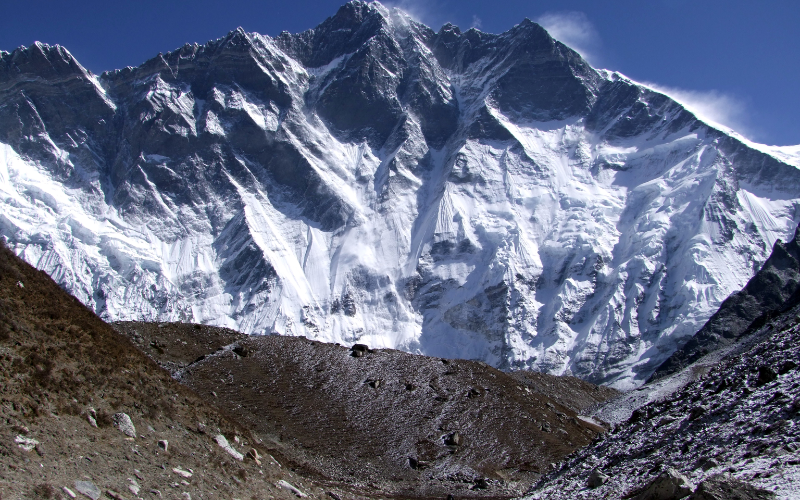Nestled in the heart of the Himalayas, Nepal is a land of staggering natural beauty, spiritual depth, and immense geographic significance. Despite its small size, this mountainous nation possesses a distinction unmatched by any other country: it is home to eight of the world’s fourteen highest peaks, all towering above 8,000 metres. Among them stands the iconic Mount Everest (8,848.86 metres) — the highest point on Earth.
The Himalayan Giants
Running along Nepal’s northern frontier, the Himalayan range forms a magnificent barrier of snow and rock. Within its borders rise eight of the fabled “eight-thousanders” — mountains that exceed 8,000 metres in height. These are:
Mount Everest (8,848.86 m) – Known locally as Sagarmatha and in Tibetan as Chomolungma, Everest remains the ultimate dream for climbers around the globe.
Kanchenjunga (8,586 m) – The world’s third-highest peak, straddling the Nepal-India border, revered by local communities as a sacred guardian.
Lhotse (8,516 m) – Rising beside Everest and connected via the South Col, Lhotse is the fourth-highest mountain on Earth.
Makalu (8,485 m) – Distinguished by its striking pyramid shape, Makalu stands just east of Everest on the Nepal-China border.
Cho Oyu (8,188 m) – The sixth-highest mountain, often regarded as one of the more approachable 8,000-metre peaks for climbers.
Dhaulagiri I (8,167 m) – Meaning “White Mountain” in Sanskrit, Dhaulagiri dominates the western skyline and overlooks the Kali Gandaki Gorge — the world’s deepest valley.
Manaslu (8,163 m) – Known as the “Mountain of the Spirit”, Manaslu offers a perfect blend of cultural richness and mountaineering challenge.
Annapurna I (8,091 m) – The tenth-highest mountain globally, famous for its beauty as well as its formidable climbing conditions.
.png)
A Haven for Adventure and Culture
Nepal’s towering peaks are more than geological marvels — they are integral to the nation’s culture, economy, and identity. Each year, thousands of trekkers and mountaineers journey through regions such as the Everest Base Camp, Annapurna Circuit, and Manaslu Trail, drawn by both the grandeur of the mountains and the warmth of the Nepali people.
The Himalayas are also spiritual landscapes, adorned with monasteries, chortens, and fluttering prayer flags. Here, ancient traditions continue to thrive amidst the thin mountain air, where the physical and the spiritual worlds seem to meet.
Guardians of the Himalayas
Beyond their beauty, Nepal’s mountains play a vital role in the planet’s environmental balance. The glaciers of the Himalayas feed many of Asia’s great rivers, providing water to hundreds of millions of people. Yet, these glaciers are retreating rapidly due to climate change. As a result, Nepal finds itself on the frontline of the climate crisis, working to promote sustainable tourism and conservation efforts that protect both nature and livelihoods.

A Nation of Peaks and Pride
In early 2025, Nepal’s Department of Tourism announced the identification of six additional 8,000-metre peaks within its borders, based on new topographical data. While these have not yet been formally recognised by international mountaineering bodies, the move highlights Nepal’s extraordinary position at the heart of the world’s highest mountain system.
From the snow-capped summit of Everest to the tranquil valleys beneath Annapurna, Nepal is truly a land where the earth touches the sky. As the home of eight of the world’s fourteen highest mountains, it stands as a testament to both nature’s grandeur and humanity’s enduring spirit of exploration.
PC: Peter West Carey, Wikimedia Commons
Also Read